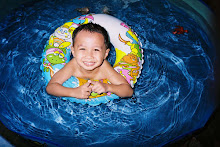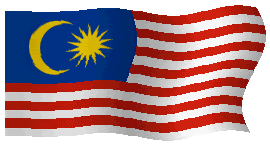 How often can you say that you've seen the components of a space telescope being worked on at NASA? Thanks to NASA's Goddard Space Flight Center in Greenbelt, Md., that has now changed. › Learn More
How often can you say that you've seen the components of a space telescope being worked on at NASA? Thanks to NASA's Goddard Space Flight Center in Greenbelt, Md., that has now changed. › Learn MoreSEE AND HEAR MORSE CODE
ASTRA Malaysia
Thursday, March 11, 2010
Go into a NASA Clean Room Daily with the Webb Telescope via NASA's 'Webb-cam'
 How often can you say that you've seen the components of a space telescope being worked on at NASA? Thanks to NASA's Goddard Space Flight Center in Greenbelt, Md., that has now changed. › Learn More
How often can you say that you've seen the components of a space telescope being worked on at NASA? Thanks to NASA's Goddard Space Flight Center in Greenbelt, Md., that has now changed. › Learn MoreHow often can you say that you've seen the components of a space telescope being worked on at NASA? The answer is probably "rarely, if ever." However, thanks to NASA's Goddard Space Flight Center in Greenbelt, Md., that has now changed.Web cameras in Goddard's largest clean room are now providing daily, live coverage of work being done on components of the upcoming James Webb Space Telescope. You could say they're "Webb-cams" and they provide one image per minute so people can see what happens behind the scenes. Of course, the work happens during regular working hours, so there may not be action on screen all the time.John Decker, Webb telescope Deputy Project Manager at NASA Goddard was the motivator in getting the "Webb-cam" up and running. "I thought it would be a great way for everyone to see what happens behind the scenes as components of this exciting new space telescope are being tested and coming together here at NASA Goddard," Decker said.The Webb telescope project is managed at Goddard, and several components of this next generation space telescope are already in a clean room here.
The James Webb Space Telescope is the next-generation premier space observatory, exploring deep space phenomena from distant galaxies to nearby planets and stars. The Webb telescope will give scientists clues about the formation of the universe and the evolution of our own solar system, from the first light after the Big Bang to the formation of star systems capable of supporting life on planets like Earth. The telescope is a joint project of NASA, the European Space Agency, and the Canadian Space Agency and is expected to launch in 2014.Clean rooms are like operating rooms in hospitals. They are pristine areas kept as free as possible of contaminants that could interfere with delicate technology. There are several clean rooms at NASA Goddard.Anyone that works in a clean room, such as engineers and scientists, have to wear sterile bodysuits, head covers, gloves, boots, and face masks. It takes about 10 to 15 minutes to get dressed before entering, and it's important because even one speck of dust or a fingerprint could severely damage the sensitive telescope components and instruments. Clean rooms act to filter out these harmful contaminants through a unique ventilation system and an entire wall of air filters. The clean room ventilation system circulates almost one million cubic feet of air every minute through 9,000 square feet of HEPA filters located along one wall. The HEPA filters are specially designed to last several decades. All of these features provide the largest Goddard clean room with a Class-10,000 rating. That means any cubic foot of air in the clean room has no more than 10,000 particles floating around in it larger than 0.5 microns. A micron is one-millionth of a meter, and typical “outside” air has millions of such particles. A human hair is between 20 and 200 microns wide.The advantage to the Webb-cam is that the average person doesn't need to do a micron-type clean up and spend time donning protective gear. Anyone can sit at their computer and see what's going on, no matter what they're wearing.
Related Links
at 6:47 PM
Subscribe to:
Post Comments (Atom)
MyEQSLCard

eQSL Card (Recieved)

igq107 QSL Card







THE POSTCARD CROSSING PROJECT
ABOUT AMATEUR RADIO
Amateur radio service is defined in the Communication and Multimedia (Spectrum) Regulations 2000 as a radiocommunications service (covering both terrestrial and satellite) in which a station is used for the purpose of self traning, intercommunication and technical investigations carried out by authorized persons who are interested in radio technique solely with a personal aim and without any pecuniary interest.
AMATEUR RADIO OPERATOR'S CERTIFICATE
Regulation 27(1) of the Communications and Multimedia (Technical Standards) Regulations 2000 states that no person shall undertake or conduct any activity in designated skil area unless that person is certified. Amateur radio operator has been gazetted as a designated skill area category under the regulation, hence to operate an amateur radio station a person needs to have an appropriate proficiency and skill i.e. certified in this area.
INTERFERENCE
Please ensure that the radio transmision does not cause interference to any other radio services. Regulation 15(1) of the Communications and Multemedia (Technical Standards) Regulations 2000 states that no person shall intentionally design, install, operate, maintain or modify any communications equipment in a manner is likely to cause interference with, impairment, mulfunction of, or harm to any communications equipment or any other equipment.
Regulation 15(2) of the regulation denotes that a person who contravenes this regulation commits an offence and shall, on conviction, be liable to a fine not exceeding three hundred thousand ringgit (RM 300,000.00) or to imprisonment for a term of not exceeding three years or to both.
To eliminate the potential of interferences, the following procedures must be followed strictly:-
a) Ensure that suffient equipment, tools and test gear is available and can used to monitor and verify that your transmission does not cause any interference to other radio services.
b) You must responsible if your amateur radio is found to be the caused of interference. Immediate remedy action must be taken to rectify the problems in case of interference.
c) Ensure that the transmission do not exceed the level of over deviation.
d) Ensure that the radiated energy is always within the narrowest posible frequency bands for any class of emission in use.
e) The radiation of harmonics and spurious emissions should be suppressed to minimize interference.
Regulation 15(2) of the regulation denotes that a person who contravenes this regulation commits an offence and shall, on conviction, be liable to a fine not exceeding three hundred thousand ringgit (RM 300,000.00) or to imprisonment for a term of not exceeding three years or to both.
To eliminate the potential of interferences, the following procedures must be followed strictly:-
a) Ensure that suffient equipment, tools and test gear is available and can used to monitor and verify that your transmission does not cause any interference to other radio services.
b) You must responsible if your amateur radio is found to be the caused of interference. Immediate remedy action must be taken to rectify the problems in case of interference.
c) Ensure that the transmission do not exceed the level of over deviation.
d) Ensure that the radiated energy is always within the narrowest posible frequency bands for any class of emission in use.
e) The radiation of harmonics and spurious emissions should be suppressed to minimize interference.
Historical Description of Amateur Radio: From the Encyclopedia Britannica:-
Interest in amateur radio arose around the turn of the century, shortly after the Italian inventor Guglielmo Marconi successfully sent the first transatlantic wireless signal in 1901. The interference of amateur broadcasts with commercial and military transmissions led to the institution of government control in 1911. After World War I, amateurs became active in radio experimentation, contributing to developments in long-distance broadcasting and becoming the first radio operators successfully to exploit the upper medium-frequency and lower high-frequency radio bands. Over the years, amateur radio operators have also provided emergency communications during forest fires, floods, hurricanes, and other disasters. They serve as an important link between stricken communities and the outside world until normal communications are reestablished.Amateur radio operators in the United States are subject to international and federal regulations. There are five classes of licenses. Competence in the use of the International Morse Code and a knowledge of radio theory and regulation are required to obtain the advanced-level licenses. Amateur radio is allocated frequencies at the extreme high-frequency end of the medium-wave band, five groups of frequencies in the shortwave band, two groups in the veryhigh-frequency band, three in the ultrahigh-frequency band, and seven in the superhigh-frequency band for telegraphic and telephonic communication using amplitude and frequency modulation. There are restrictions on the power of the transmitters, and certain of the frequencies must be shared with due regard for the needs of other users.














































0 comments:
Post a Comment